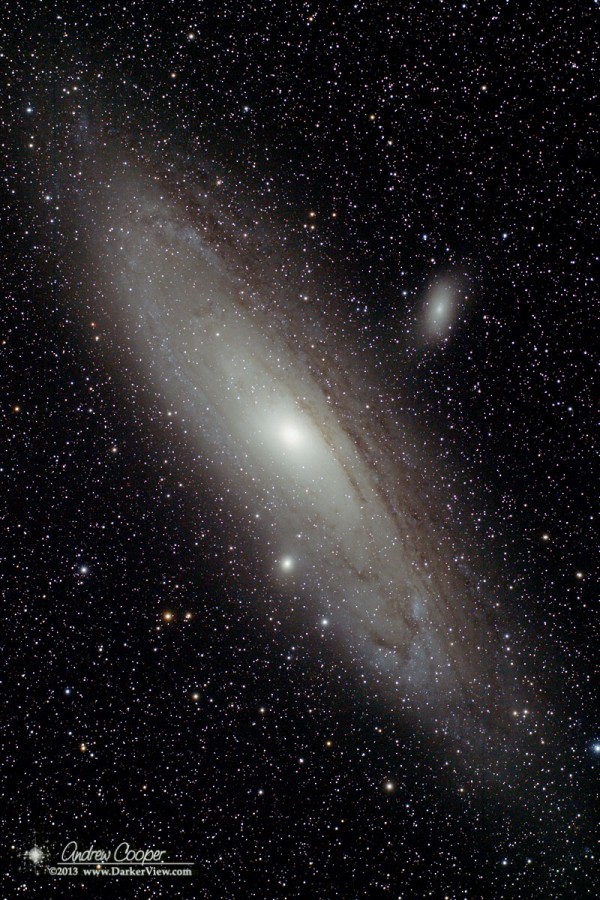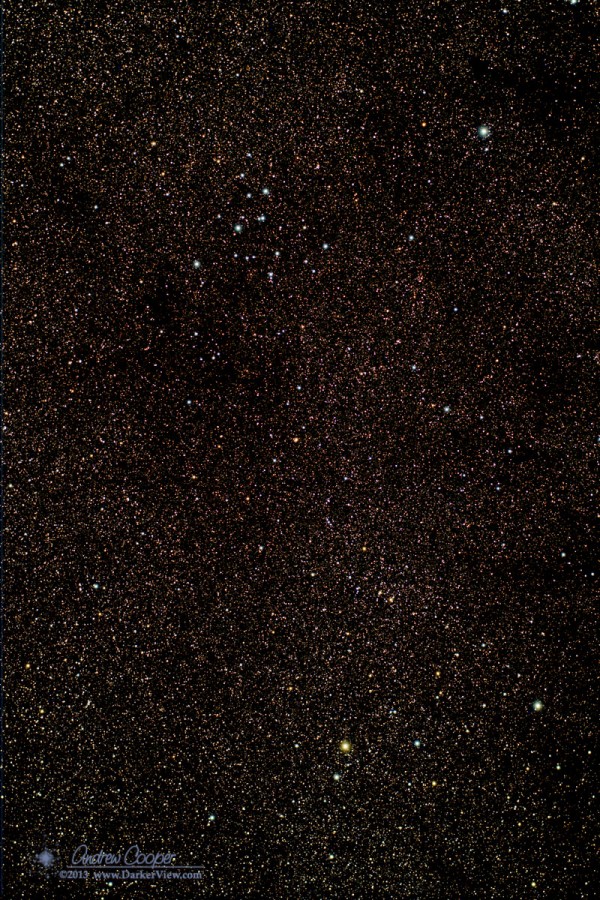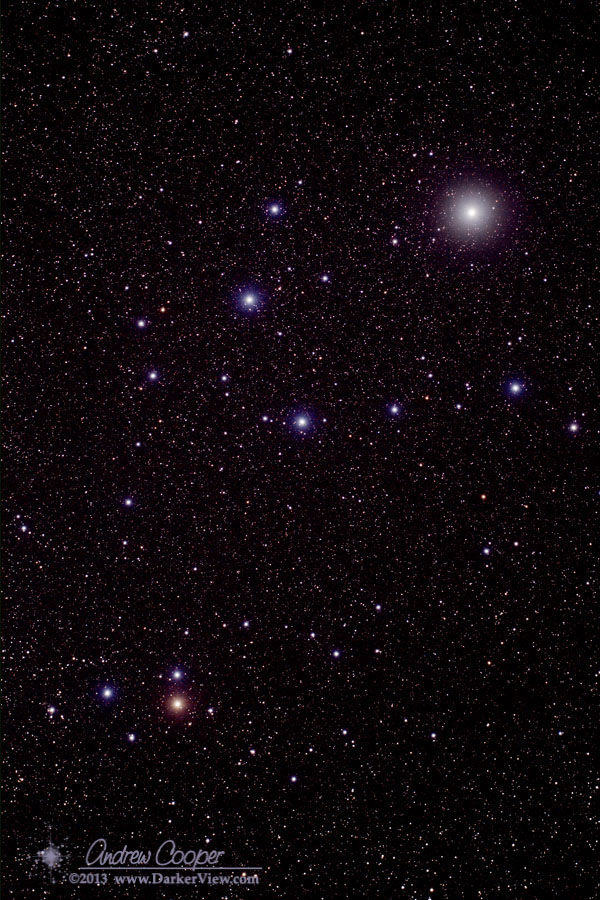Yes, the 6D on a telescope! Just getting things setup for some possible comet shooting. The clouds over Hawai’i may actually be breaking up after a week of very wet weather.

When you want to see the stars, find someplace dark
So I shot M31… yet again. I admit I enjoy this target, it is just so much fun. I always think I can do a little bit better. It is color balance that has been my bugaboo lately, I have really been playing with my technique to achieve a decent color balance. Something aesthetically pleasing and something that bears at least a little resemblance to reality. I understand how objective these criteria are, but still… I try.
Be sure to click on the image to get the large version…

The idea is to take a photo of a bright deep sky object and the surrounding region. The result should be an impressive starfield with something bright to give the image some punctuation. This does not always work.
In the previous image, Mirfak and Mellotte 20, the idea worked pretty well. Bright stars highlight a rich Milky Way starfield in Perseus. In this next image I processed the plan did not quite work as well. The target is the bright open cluster M39. At magnitude 4.6 I thought the cluster would appear brighter against the surrounding starfield. In this case the component stars are somewhat dimmer, thus the effect is not as dramatic.
There is still a lot of material to process from OSP, we shall see what worked and what did not.

Mirfak is the brightest star in Perseus, punctuating a rich starfield in the northern Milky Way. The image was shot at Oregon Star Party 2013 with the TV-76 and Canon 60D…

Well past perihelion comet C/2011 L4 continues to put on an impressive show. Amateur sky-watchers have been enjoying the impressive anti-tail reaching out a few degrees from the coma. True, you may need a telescope or at least good binoculars to see the comet. It may be dimming, but still worth the effort to observe.
